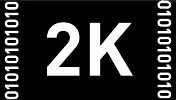

The 85 year-old surrealist filmmaker and artist Alejandro Jodorowsky, best known for his 1970s avant-garde features El Topo and The Holy Mountain, makes a triumphant return to movie screens with The Dance of Reality. Possibly his final film, The Dance of Reality documents the director’s childhood growing up in the seaside town of Tocopilla, Chili. But the autobiographical nature of the picture is less a re-creation of events that shaped the young man’s life, and more the culmination of the adult artist’s beliefs about how active imagination informs, shapes, and transforms a person’s life. He sees imagination as central to our most important processes, such as how we remember and interpret the past and how we envision what awaits us in the afterlife. Jodorowsky explored his childhood memories (or, more accurately, his dreamlike recollections of youth) in his recent autobiography of the same title. Now with this rich, colorful, Felliniesque screen adaptation, he creates a convincing case for his central conviction that “reality is not objective but rather a ‘dance’ created by our imaginations.”
Jodorowsky and producer Michel Seydoux (Nikita Mikhalkov’s Burnt by the Sun, Peter Greenaway’s Prospero's Books, and Jean-Paul Rappeneau’s Cyrano de Bergerac) reteamed to make this film more than thirty years after their attempt to make a movie of Frank Herbert’s seminal sci-fi novel Dune. (The story of that failed production is documented in Frank Pavich’s entertaining documentary Jodorowsky’s Dune, also released this year.) The two filmmakers met again while being interviewed for the documentary and decided they must try again to make a picture together. In accordance with Jodorowsky’s ambivalence about money, the director insisted the entire film be financed purely through donations, claiming that he wanted this picture to lose money, since making a profit is the ultimate goal of far too many films.
Throughout The Dance of Reality, Jodorowsky appears on screen to interject brief pieces of narration and visual commentary. This technique of occasionally interacting with his characters (his memories), and commenting on the meanings of their actions, works well. There is not a whiff of pretension in these moments, nor do they distract from the action or diminish the established reality of the narrative. Indeed, none of the film’s fantastic elements break the idiosyncratic verisimilitude of the story. Every choice the director makes--from having his mother sing all her dialogue as if she were in an opera, to the exaggerated menagerie of deformed former mine workers who populate the town, to the metaphorical paralyzing of his father’s hands when he is unable to carry out his life-long ambition--exquisitely reinforces the film’s central themes about the nature of perception, memory, and truth.
As he has in the past, the director casts his son Brontis in the leading role. This time Jodorowsky’s grown son plays his young father, Jaime Jodorowsky. Perhaps the most fascinating aspect of the picture is how Jamie transforms from the story’s rather one-dimensional villain to its complex and tragic hero. This unorthodox change in perspective can be achieved because the film’s main character is Jodorowsky himself--at first embodied by young Jeremías Herskovits, the film’s ostensible protagonist, who is gradually integrated, along with all the other actirs and characters, into the adult filmmaker himself. The combination of this morphing of perspective with the director’s philosophical concepts about life may sound a bit highfalutin, indulgent, or abstract, but in the context of this picture, nothing could seem more natural.




